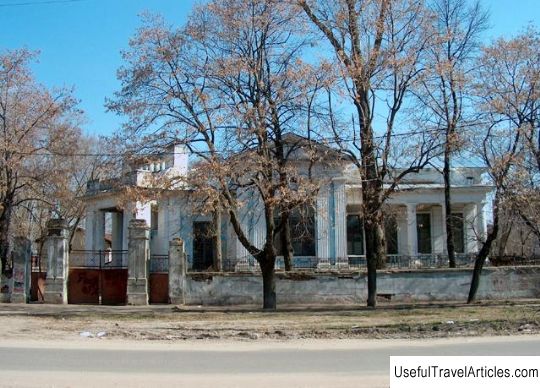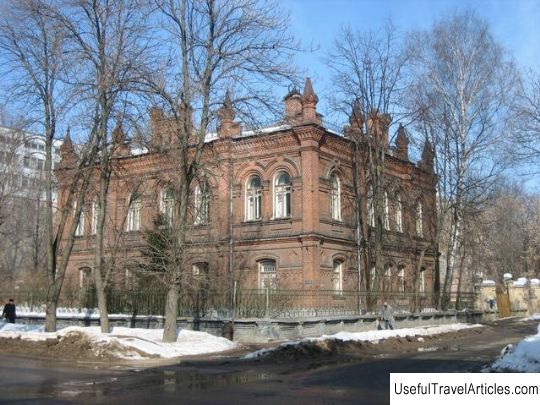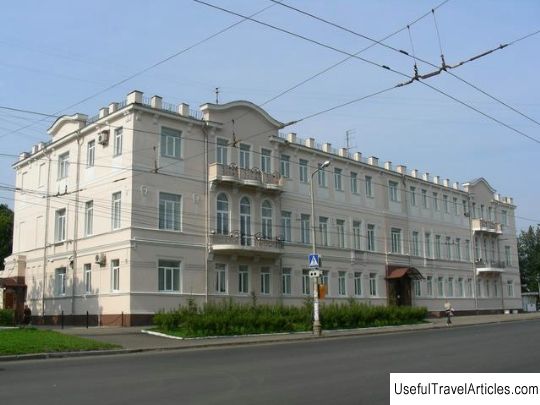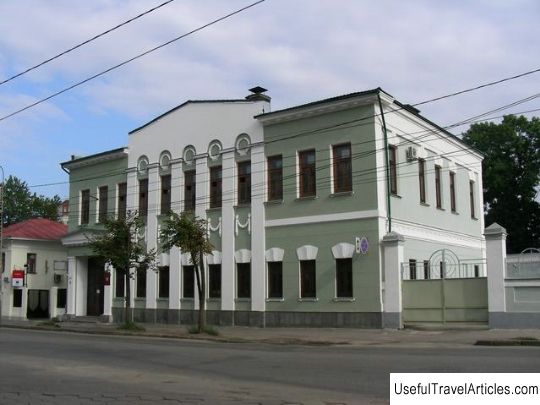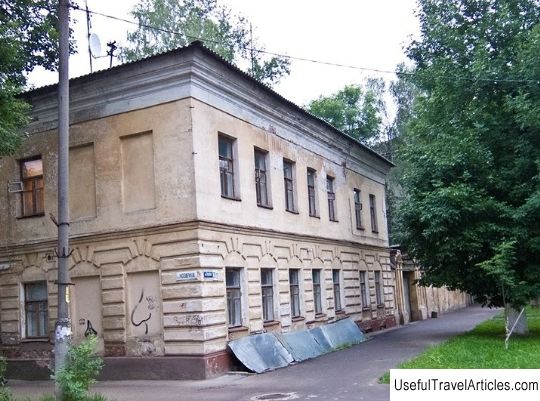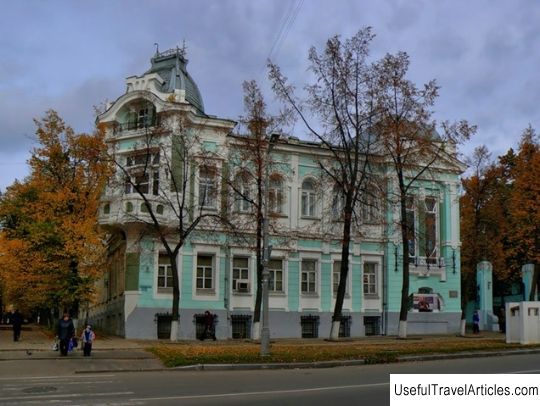A. I. Sokolov description and photo - Russia - Golden Ring: Ivanovo
Rating: 7,8/10 (658 votes) A.I. Sokolov description and photo - Russia - Golden Ring: Ivanovo. Detailed information about the attraction. Description, photos and a map showing the nearest significant objects. Photo and descriptionAt the intersection of Maria Ryabinina and Third International, 37/28 streets of the city of Ivanovo there is a mansion of A.I. Sokolov with a slight indent from the extreme red line. At one time the house was completely plastered and originally built of bricks. The separation from the street is carried out with the help of a high fence, equipped with a metal lattice on an elevated pedestal made of stone. The fence has a beautiful front gate with twin Doric columns on either side. The mansion was erected in 1911. The author of this project was the talented famous architect I.E. Bondarenko, who was hired for A.I. Sokolov, who is the son of the head of a trading company called Ivan Sokolov and Sons. The mansion built has become one of the best which were erected in the style of neoclassicism throughout Ivanovo. The house was absolutely not inferior to other buildings in terms of decoration within the framework of the capital's architecture. In terms of the mansion has an L-shape with several cut corners. The compositional component is especially pronounced on the diagonal and is clearly emphasized by the large extension of the oblong and developed, located at the entrance of the Doric portico in antae, which is located at the junction of the existing wings; it corresponds to the portico of the deep loggia seen in a small inner corner of the common courtyard. The house is two-storied and has a semi-basement and a small mezzanine above the southern part of the facade. The overlap of the house was carried out with the help of a hip roof, and a two-tiered complex balustrade of the portico and the gables of the risalits rise above it. The complication of the facade line is made in the form of a terrace with a Doric colonnade on the eastern side, as well as projections, which are interpreted as pilaster porticos equipped with pediments. Any of the elements of the facade is symmetrically built and dissected by high rectangular window openings with bow and triangular sandrids. As for the decoration, the elements made in the style of classicism are more characteristic of the house, although there are also elements borrowed from ancient antique architecture - these are Doric columns that serve as a support for the floors of the loggia. The decor includes fluted paired pilasters flanking projections, triglyphnometopic friezes, oblong ribbons of relief miander of various scales available above window openings, a cornice of a strong bevel with mutulas. The interior component is reflected in the traditional principles of the Art Nouveau style, which is characterized by complex spatial connections between the rooms. Along the diagonal axis running from southeast to northwest, immediately behind the main entrance, which is at the junction of the long and short wings of the house, with some sequence there is the entrance hallway, which is connected by a marble staircase to the oval hall, and from it the doors lead to other front rooms of the small east wing and then to the elongated corridor of the west. The corridor is followed by a polygonal hall with a complex configuration and access to the garden through a large loggia. The columns of the lobby, the oval hall and the stairs brightly emphasize the diagonal axis of the entire composition. The longitudinal axes of the wings are practically perpendicular to the axis of the composition. The wing of the house located on the west side has an independent entrance, consisting of several rooms, which open onto a common corridor that connects this part of the house with the northeastern front part. In many halls, elongated cornices are still preserved, as well as tiled stoves and oak parquet floors. During the Soviet era, the mansion of A.I. Sokolov, a wide variety of institutions were located: the department of the oncological dispensary, the skin and venereal dispensary, and many others.        We also recommend reading Town Hall (Rathaus) description and photo - Switzerland: Zurich Topic: A. I. Sokolov description and photo - Russia - Golden Ring: Ivanovo. |
